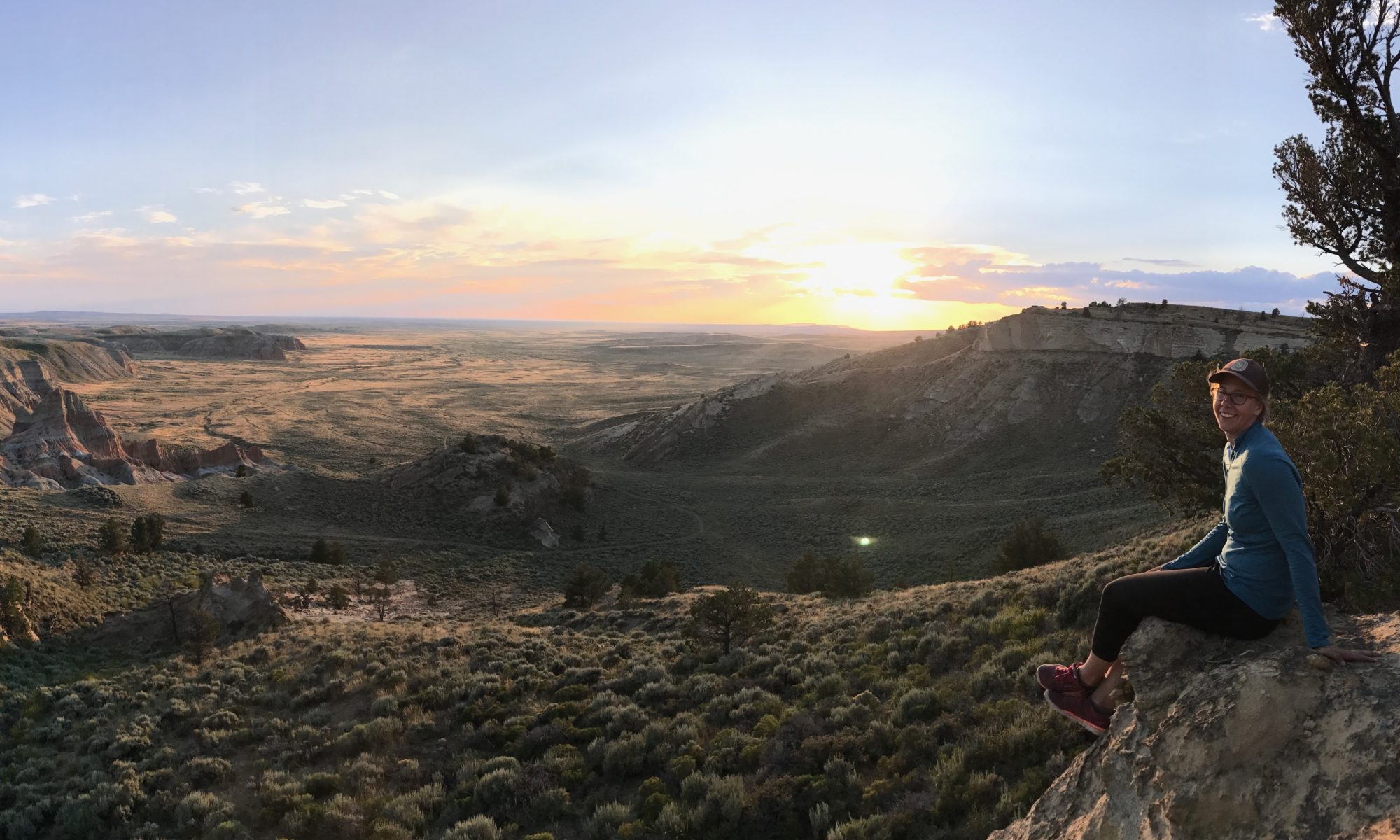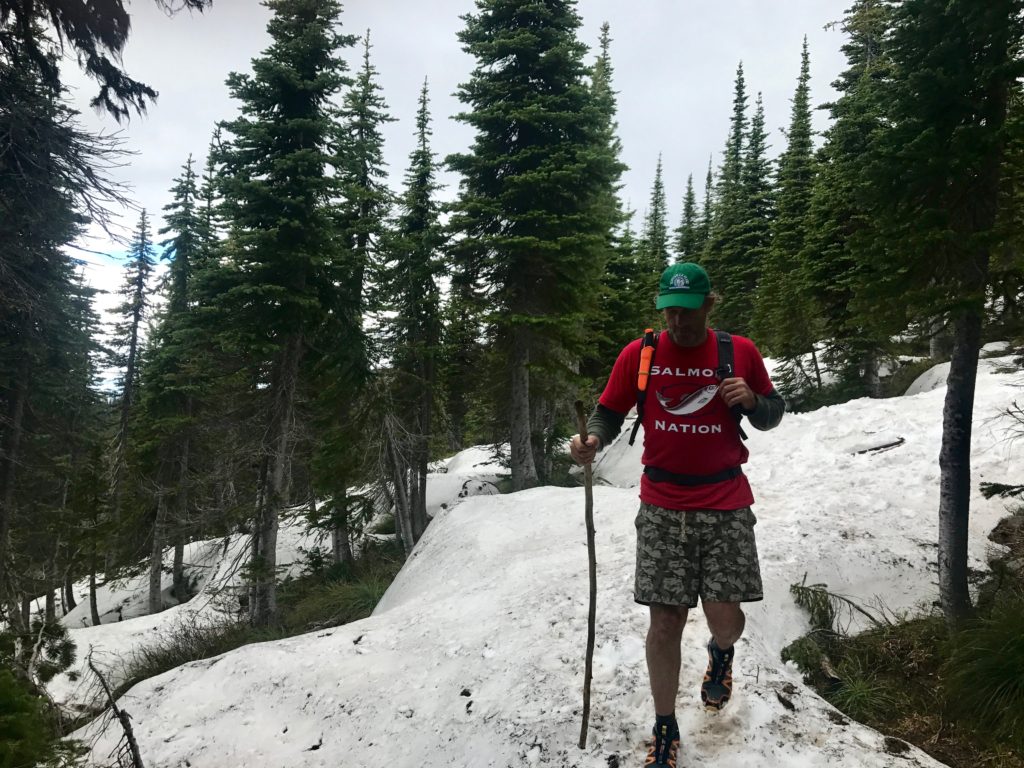
From Boise we traveled 8 hrs by car to Sandpoint, Idaho, to explore the Scotchman Peaks area and to meet the great people at Friends of Scotchman Peaks Wilderness.
We knew little about the area, so we were looking forward to meeting the Scotchman Peaks’ team. Friends of Scotchman Peaks Wilderness were sponsoring an aid station for a 150-mile charity bike race offering chili dogs, snacks and lots of water, and we were volunteer support for the day. With a Scotchman Peaks banner displayed and wearing hats with their awesome logo “Will Work For Wilderness,” we served over 200 riders and promoted the designation of the Scotchman Peaks as wilderness.
During the day, Phil Hough (Executive Director) and Sandy Compton (Program Coordinator) gave us a run down on the peaks and the group’s progress in getting the area designated as wilderness. The roadless area straddles Idaho and Montana, and is one of the last and largest wild areas in the area. Somehow there is no protected wilderness areas in the nine northern Idaho counties and the Kootenai forest has the fewest acres of protected wilderness of all national forests in Montana. So the Scotchman Peaks offer a unique opportunity for the states to conserve over 80,000 acres of roadless forest and headwaters.
Wilderness designation requires an act of Congress and Idaho Senator Jim Risch introduced a bill in 2016 to protect 14,000 acres. Hopefully the bill will get traction this year and pass, and Montana will follow suit and protect the 50,000 acres in its state.
On Sunday we finally headed up Scotchman Peak, the areas namesake. It’s a steep climb – you gain around 4,000 feet in elevation in 3.8 miles to get the 7,009-foot tall peak! The hike is a blast and the views were amazing. As an added bonus, you often get to see mountain goats hanging out on the peak. (Sadly, they were hiding from us while we were at the top.) Phil had given us the lowdown on the goats the day before. They are salt addicts and have learned that the hikers on the top are often coated in a nice layer of salty sweat. As a result, the goats will try to lick hikers. It may sound like a cool photo op, but mountain goats have sharp horns and have gored more than one outdoor enthusiast. More importantly, the more comfortable the goats get with people, the more likely there is to be conflict. The goats are usually the losers in that scenario.
Permanently protecting the area seems like a no brainer. The area is pristine and evokes a true feeling of the wild. This is a must-visit spot in Northern Idaho.











